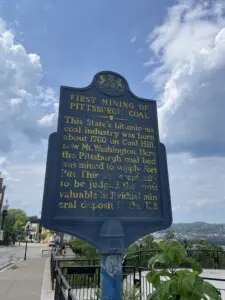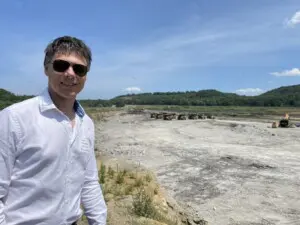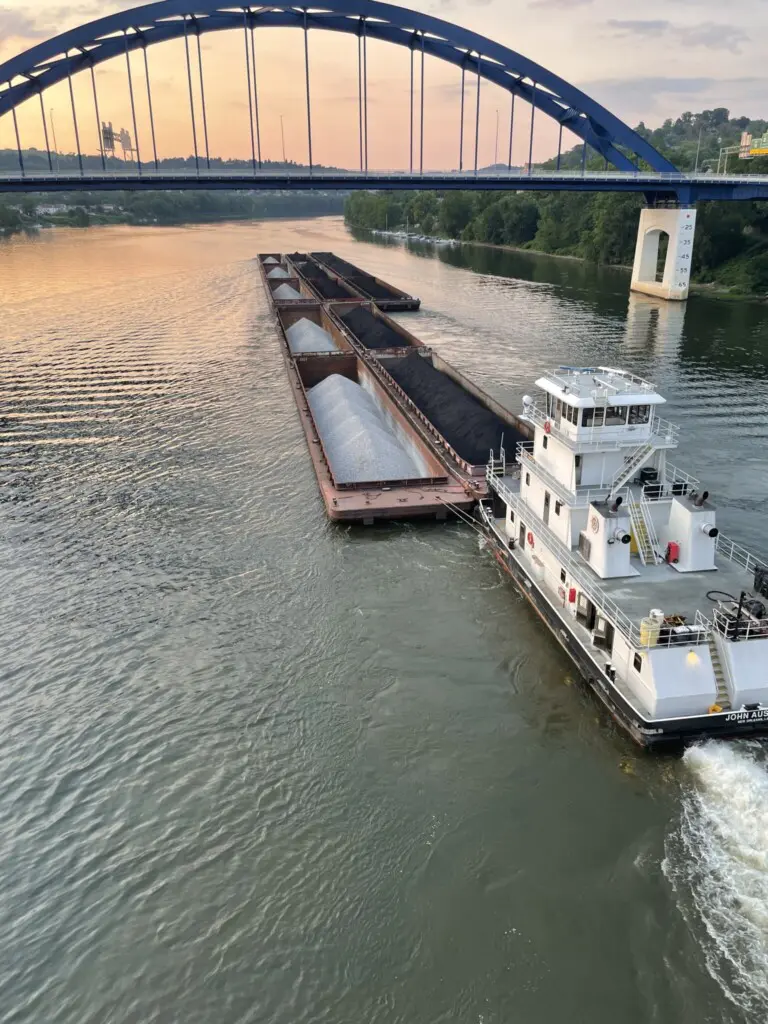
Street mural of coal workers, Athens, Ohio
The Global Conference on Coal Transitions was held in Columbus, USA from 15-19 July 2024, bringing together social and economic researchers and practitioners working in coal mining regions around the world. CRC TiME was represented by project leader Jess Reeves, CRC TiME HDR top-up scholarship recipient Fitsum Weldegiorgis and me. Program 1 leader Fiona Haslam McKenzie had to withdraw from the conference due to injury and was sorely missed. The conference struck a good balance between formal presentations, fieldtrips, artistic performances, professional development and connecting with mining communities. Prior to the conference I spent a few days visiting mining communities of Appalachia and the Ohio River Valley and witnessing at first hand the changes occurring in this unique region, sometimes called the cradle of the north American industrial revolution.

Industrial site available to rent at closed coal-fired power station
The conference had an action-packed agenda and there are too many highlights to list, so I can really only mention a few. One of these was a field trip to a safari park known as ‘The Wilds’ located on a large former coal mine, complete with Rhinos, Giraffes, Zebras, Cheetahs and a host of native animals. This novel post-mining land use is quite an operation with a full time team of 42 vets and managers and an ‘army’ of casuals to look after 150,000 visitors per year.
The conference included some pre-workshops and associated events including a workshop in the nearby town of Coshocton, where a Chilean delegation were conducting a knowledge exchange visit. As part of this workshop, a company who specialises in acquiring industrial sites gave a presentation about a project they have underway. For a fee, they accepted all liabilities at a former power station and surrounding coal mine and are in the process of rehabilitating the site in order to subsequently rent it out to industrial clients. When we visited the site, we could see how they chose what infrastructure to keep and what to clear as part of providing future services and ‘value adds’ to potential tenants.

Chilean delegation visiting site of former Conesville power station as part of knowledge exchange visit with Ohio
The conference itself was an excellent opportunity to showcase CRC TiME research, resulting in great interest in the work we do (and the CRC model in general). CRC TiME research on collaborative planning in Latrobe Valley was seen as potential model for other contexts in USA and beyond. My presentation based on the Beyond Closure paper was well received and helped other researchers to contextualise their work as part of a broader agenda. Fitsum spoke eloquently about economic diversification in the Bowen Basin, joining a panel session bringing together a range of Australian and New Zealand perspectives.

Sign in Pittsburgh marking location of first coal mine in Pennsylvania
Listening to the presentations from other countries brought home that there are multiple and diverse transitions underway. While there are many mines and power stations closing in places like China, there are more that are opening. In Colombia, the transition is tied to a geographic shift from one mining region to another, with one region experiencing booming effects and another experiencing the challenges of closure.
A presentation by Andrew Curley about coal in the Navajo Nation was captivating. Andrew provided great insight into experience of the Navajo’s relationship between coal, colonisation and new cultural understandings of resources. With a coal fired power station on Navajo land, Andrew used the term ‘carbon sovereignty’ to discuss the complex ways in which coal, economy, politics and culture intersect.

Former Conesville Power Station and surrounding waste storage and mine areas that have been taken over by a company that rehabilitates industrial sites and subsequently rents them out to new tenants
Following the conference sessions each evening, there were artistic and networking activities, including a live performance of ‘Calling Hours’: a theatrical memorial for the Conesville coal-fired power station that was closed abruptly during COVID. Being the anchor of the local economy, closure had profound effects on the town that were compounded by the challenges of the pandemic. With no opportunity to process this change at the time, the play was developed building on social research with community members from 2021 onwards and initially performed in 2023 within the community. Taking the form of a series of eulogies, the play was deeply cathartic. Several members of the Conesville community came to see the play again in Columbus and spoke afterwards about how moving it was for them. In addition to the play, there was also an art exhibition by Jonas N.T. Becker, with pictures of scenes from coal mining regions in Appalachia using a particular medium that incorporated coal dust into the image.
In summary, the conference was full-on and a great success. Demand to build on this excellent event was strong and I have been asked to host a workshop in Australia in 2025 to continue the momentum.

Coal is transported from coal mines to the remaining power stations by river barge in the Ohio River

